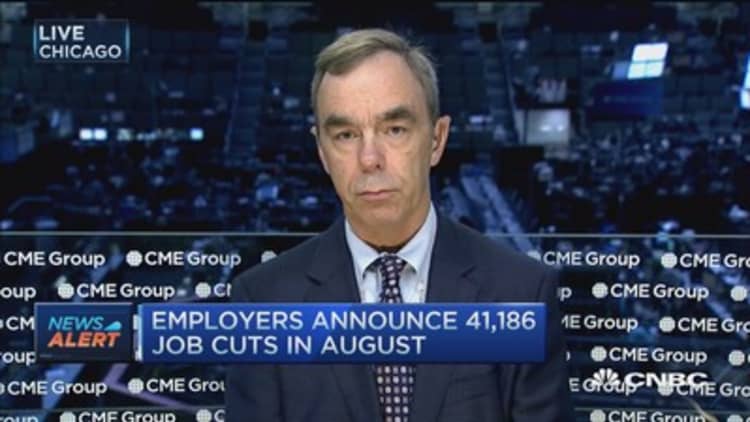
Friday's much-anticipated jobs report could be the final piece of the Federal Reserve puzzle for raising interest rates.
Should the number come in considerably above expectations of about 220,000, many market participants believe the U.S. central bank will vote to raise interest rates for the first time in more than nine years.
To whatever extent the number shows continued solid job gains, however, there likely will be relatively little consideration given to a less appealing state of the employment picture.
A fresh look released Thursday provides some perspective: For all the talk about the nearly 250,000 jobs a month the economy is creating, workers' real wages, including the cost of living, are going backward. Average pay in real terms slumped 4 percent from 2009-14, according to the National Employment Labor Project.
Read More Fed official: No evidence QE boosted economy
What's more, the jobs that have been most plentiful during the post-Great Recession boom have seen some of the biggest declines in pay. Restaurant workers, whose ranks have swelled by 376,000 over the past year (according to the Bureau of Labor Statistics), saw real pay declines of 8.9 percent for cooks, 7.7 percent for food preparers and 4.8 percent for waiters and waitresses.
In fact, NELP figures that the lowest 20 percent of workers saw overall real wage declines of 5.7 percent during the 2009-14 span. Those at the highest rung had declines of just 2.7 percent. Secretaries and administrative assistants fared best, with just a 0.2 percent decline in real wages.
"Workers in these lowest-wage jobs are doubly disadvantaged: their real wages are falling more quickly than workers in higher-paid jobs, and the starting points for the decline are already very low," the report said. "These wage declines compromise the ability of workers across occupations to make ends meet, and exact a greater burden on those workers whose earnings are already lowest."
The Fed has two main objectives in its overall monetary policy operations: full employment and price stability.
Read More Fed says activity expanding. Is rate hike next?
Inflation by the Fed's favored measures is barely above 1 percent, but the unemployment rate has been steadily dropping, and at 5.3 percent is in fact well below the original targets the Federal Open Market Committee used to gauge when rate normalization would begin.
However, low wages have been a stubborn face of life even as the jobs market added an average of 246,000 positions over the past 12 months. Average hourly earnings are growing at just a 2.1 percent pace, not enough to generate the kind of "good" inflation the Fed seeks.
"Our findings on occupational wage declines are consistent with a longer-run trend in wage stagnation and growing income inequality for America's workers," NELP said. "Reversing these trends will require concerted effort on the part of federal, state, and local policymakers, regulators and private-sector leaders to reorient our economy toward better-paying jobs."
The current unemployment rate stands at 5.3 percent. However, a measure that includes those who haven't actively searched for a job or are working part time for economic reasons—the underemployed—was at 10.4 percent in July.






